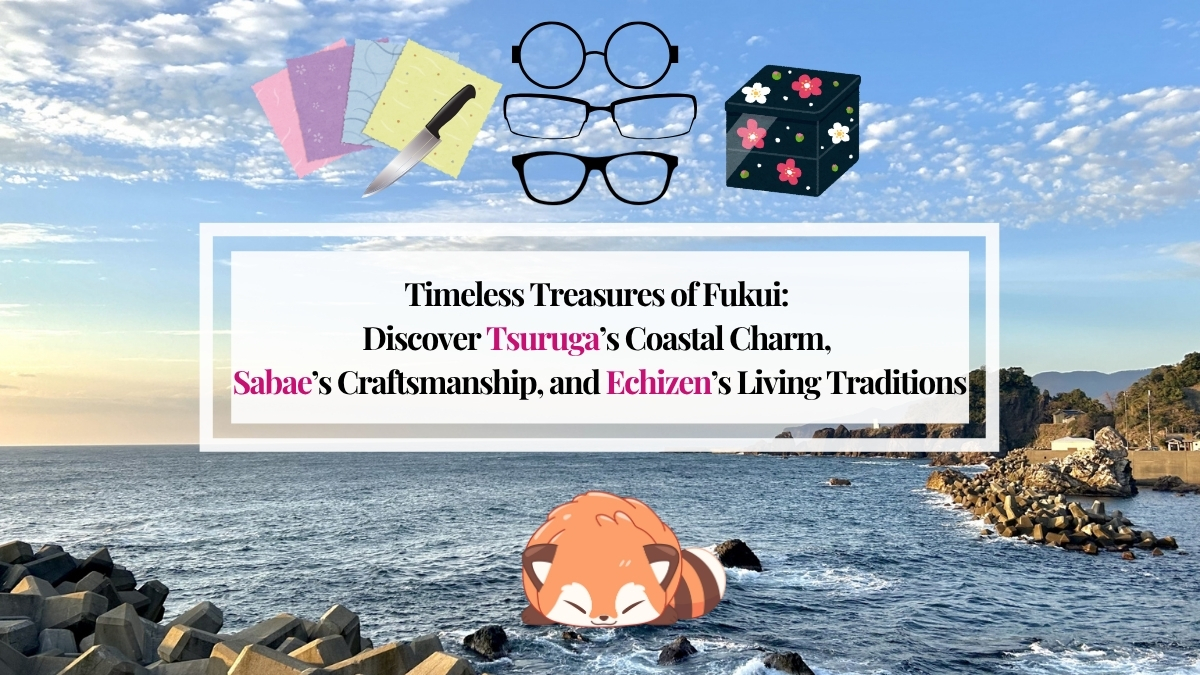Nestled along the Sea of Japan in Fukui Prefecture, the cities of Tsuruga, Sabae, and Echizen offer a captivating blend of heritage, craftsmanship, and natural beauty—ideal for travelers seeking an authentic and enriching journey through regional Japan. From Tsuruga’s historic port and sacred shrines, to Sabae’s world-renowned eyewear and lacquerware traditions, to Echizen’s ancient papermaking and samurai legacy, each city reveals a unique facet of Japan’s timeless charm. Easily accessible yet often overlooked, these destinations invite you to step off the beaten path and immerse yourself in centuries of artistry, serene landscapes, and heartfelt hospitality.
Tsuruga City, Fukui Prefecture 福井県敦賀市

Tsuruga City is located in the southwestern part of Fukui Prefecture, in the Chubu region of Japan. Facing the Sea of Japan, it has historically developed as a port town. Tsuruga is also a key transportation hub, with access via the Hokuriku Expressway and JR Hokuriku and Obama railway lines, making it well connected to the Kansai and Chubu regions. Known for its rich natural environment and historical significance, Tsuruga serves as an important center for both tourism and logistics.
Kehi Jingu Shrine: A Sacred Gateway to History and Tradition 氣比神宮
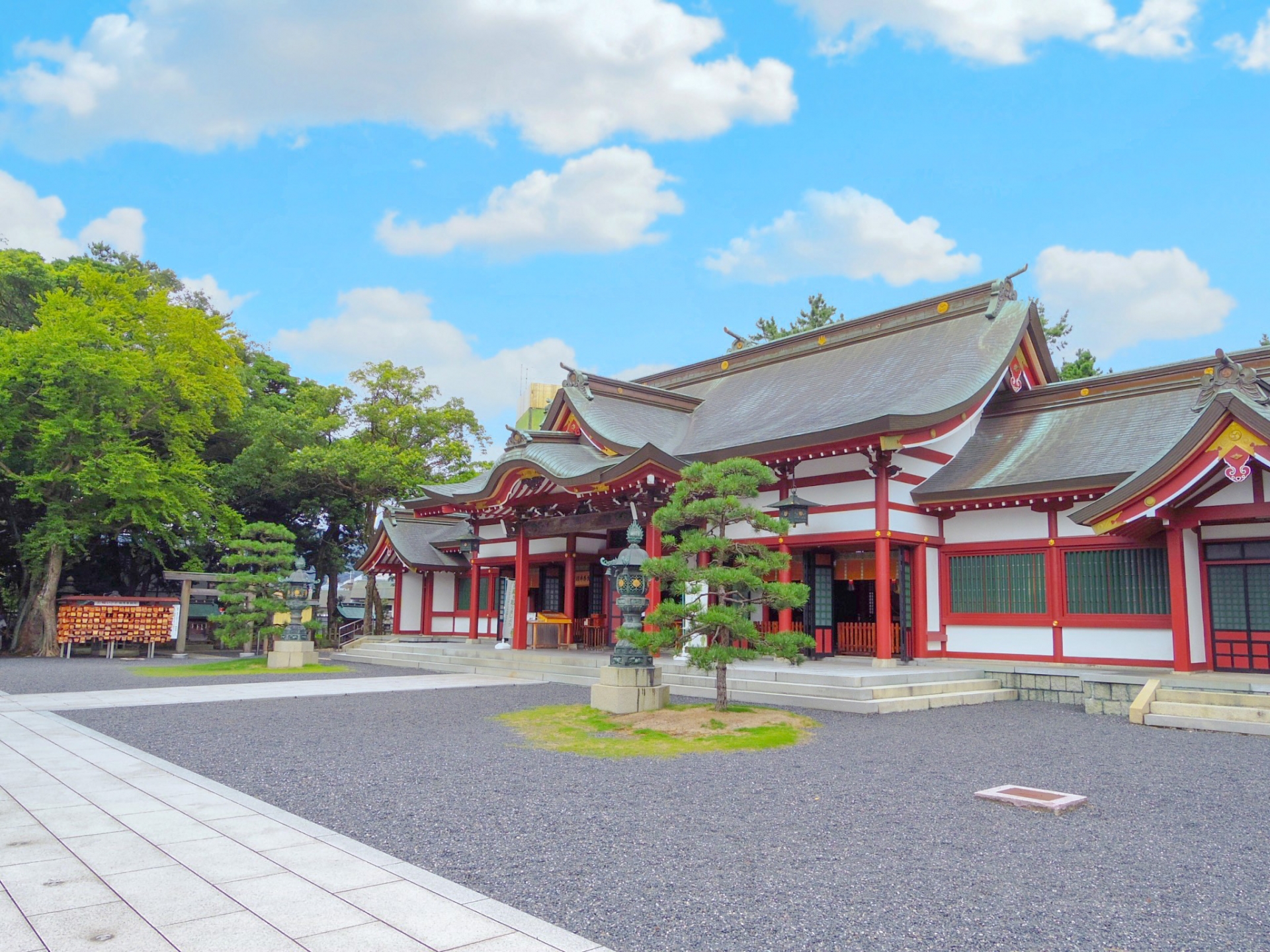
Known affectionately by locals as “Kei-san,” Kehi Jingu Shrine is a revered spiritual site and the principal guardian shrine of the Hokuriku region. Believed to have been established in 702 AD, this ancient shrine enshrines seven deities and has long been a center of devotion, officially recognized as a Grand Imperial Shrine in the Meiji era. Its most iconic feature is the majestic wooden torii gate, standing approximately 11 meters tall—a National Important Cultural Property and one of Japan’s three greatest wooden torii, alongside those of Kasuga Taisha in Nara and Itsukushima Shrine in Hiroshima.
The shrine’s peaceful grounds have inspired travelers and poets for centuries, including Matsuo Bashō, who visited in the late 17th century. His statue and commemorative poem stone can be found within the precincts, and the serene, moonlit beauty of the shrine has earned it a place among Japan’s Top 100 Moon-Viewing Sites.
Each September, Kehi Jingu becomes the vibrant heart of the Tsuruga Festival, where lively stalls and festive crowds celebrate local culture. Don’t miss the sacred Chōmei-sui (Water of Longevity) spring, which flows from a sacred rock within the shrine—believed to grant blessings of health and long life, reflecting the shrine’s divine legacy.
Tsuruga Red Brick Warehouse: Where History, Harbor, and Culture Meet 敦賀赤レンガ倉庫
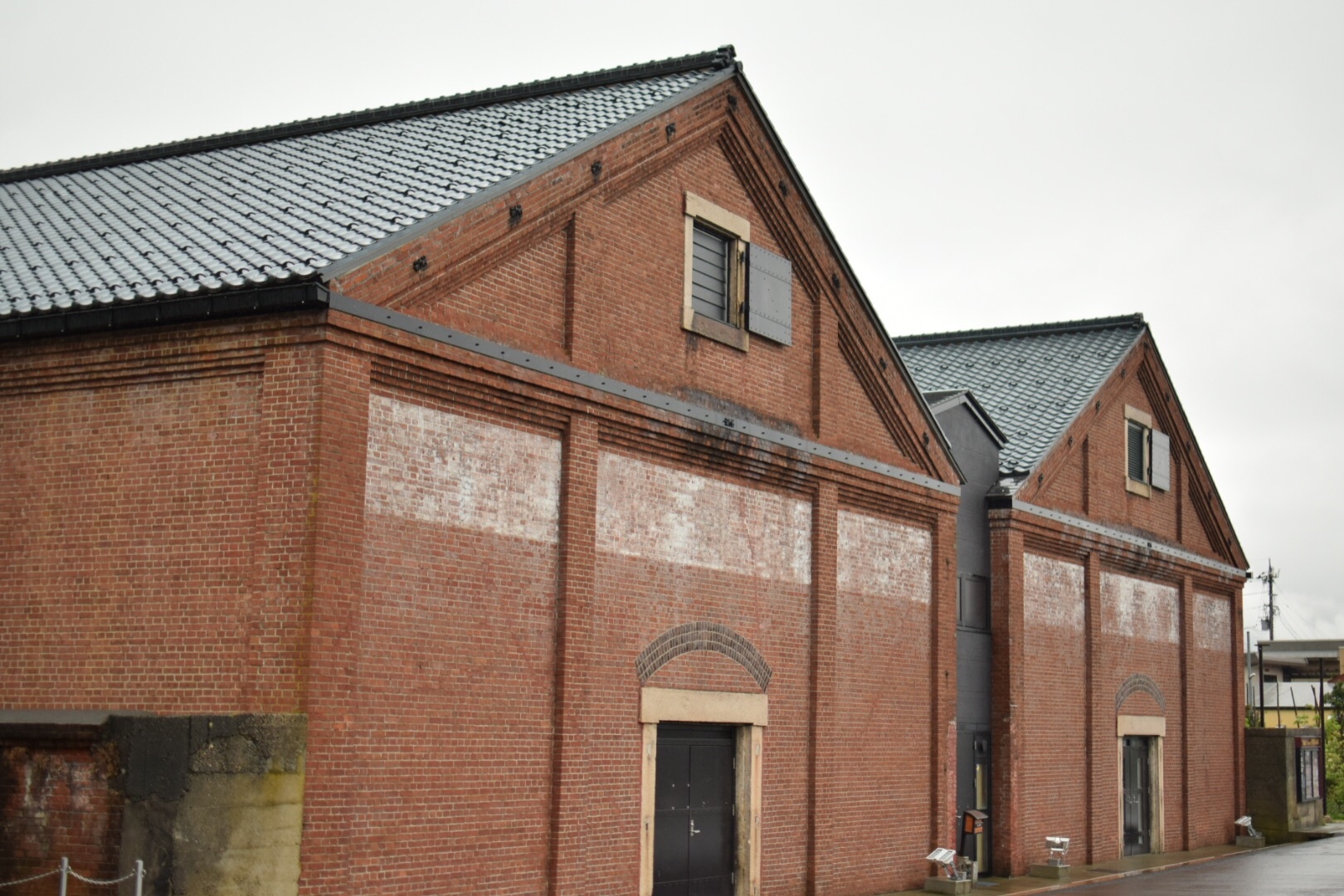
Step back in time at the Tsuruga Red Brick Warehouse, a striking waterfront landmark that blends historical architecture with modern attractions. Originally built in 1905 by the New York Standard Oil Company as oil storage facilities, these twin red brick buildings on the eastern side of Tsuruga Port are among the finest brick structures in Fukui Prefecture. Designed by foreign engineers, the warehouses reflect early 20th-century industrial architecture and were designated Registered Tangible Cultural Properties in 2009.
Today, the warehouses have been beautifully restored and repurposed into a vibrant cultural complex. Inside, visitors can explore the “Diorama Hall”, an immersive exhibit that recreates the streets and railway scenes of Tsuruga from the late Meiji to early Showa period, combining accurate historical details with a touch of entertainment. The complex also features local specialty restaurants, offering a delicious taste of Tsuruga’s culinary culture.
Nearby, visitors will find other warehouse groups with historical value, including the Showa-era “Modern Warehouses” adorned with Spanish tile accents, and post-war wooden warehouses, each with unique construction styles reflecting material shortages and restoration efforts after World War II.
Whether you’re fascinated by industrial heritage, nostalgic cityscapes, or simply want to enjoy a harbor-side meal in a historical setting, the Tsuruga Red Brick Warehouse offers a unique blend of past and present in one of Japan’s historically rich port towns.
Kanegasaki Green Park: A Peaceful Seaside Promenade in Tsuruga 金ヶ崎緑地

Overlooking the serene waters of Tsuruga Port, Kanegasaki Green Park is a tranquil seaside retreat where history, romance, and the sea breeze come together. This lush waterfront park features a spacious boardwalk and deck that stretch along the coast, offering panoramic views of the harbor and inviting visitors to enjoy a leisurely stroll by the sea. The park is dotted with charming sights such as the Lamp House and retro-style rest areas that evoke the nostalgic atmosphere of Tsuruga’s historic port town.
At the heart of the park stands the Port of Humanity Tsuruga Museum, housed in a Western-style building inspired by the former Owada Villa. This museum tells the moving story of Jewish refugees who were welcomed through Tsuruga during WWII, offering visitors a meaningful perspective on the city’s legacy of compassion and international exchange.
Surrounding the park are other cultural landmarks like the Tsuruga Red Brick Warehouse and Tsuruga Railway Museum, making the area a rich blend of recreation and reflection. As evening falls, subtle illuminations light up the park’s rest areas and boardwalk, casting a beautiful glow over the water and enhancing the park’s serene, romantic ambiance.
Mizushima Island: The “Hawaii of Hokuriku” 水島
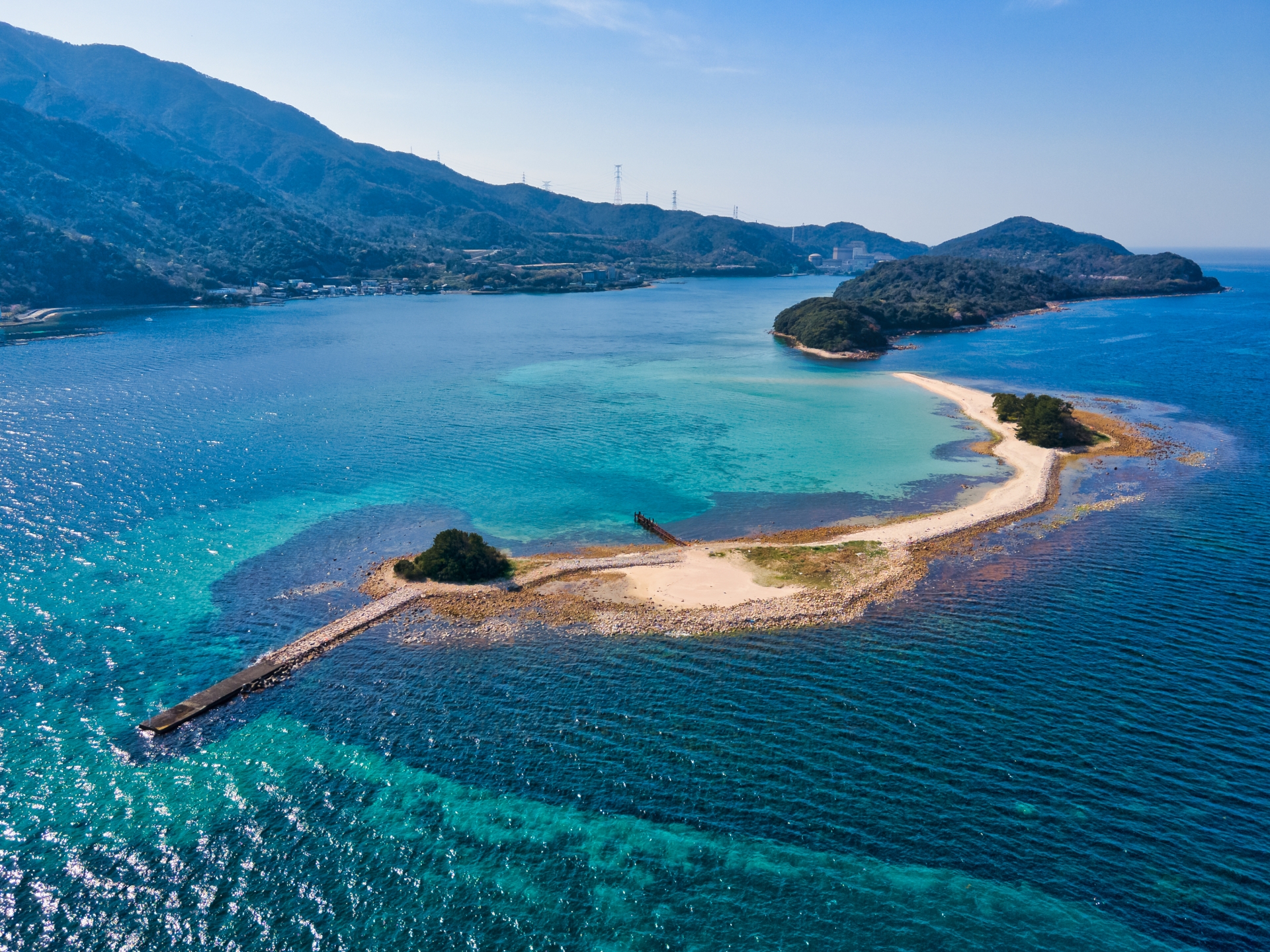
Tucked off the tip of the Tsuruga Peninsula, Mizushima Island is a tiny, uninhabited gem renowned for its crystal-clear waters and powdery white sand—earning it the nickname “Hawaii of Hokuriku.” This idyllic island paradise is only accessible during the summer months via a short ferry ride, making it a seasonal escape beloved by beachgoers, couples, and families alike.
Once ashore, visitors are greeted by a tranquil beach perfect for swimming, sunbathing, and beachcombing. The exceptionally clear water is ideal for spotting fish, collecting seashells, and enjoying shoreline adventures. With no buildings or vehicles in sight, Mizushima offers a pure and refreshing connection to nature.
Nihonkai Sakana Machi: A Seafood Lover’s Paradise on the Japan Sea Coast 日本海さかな街
As one of the largest seafood markets on the Sea of Japan, Nihonkai Sakana Machi in Tsuruga is a must-visit destination for anyone craving the freshest catch and a true taste of coastal Japan. This bustling market is home to dozens of stalls offering everything from sashimi-grade fish and grilled seafood to kaisendon (seafood rice bowls) and freshly made sushi. Visitors can also explore a variety of shops selling local specialties, dried and processed seafood, and unique souvenirs from the Tsuruga and Wakasa regions.
A highlight of the market is its famed Echizen crab, the culinary crown jewel of Fukui Prefecture. Available from November 6 to March 20 during the crab season, the prized crabs—marked with a yellow tag to certify authenticity—are celebrated in the market’s annual Crab Festival, where both live and boiled crabs are sold at market prices.
Whether you’re looking to indulge in a seafood feast, take home some delicious regional products, or simply soak in the lively local atmosphere, Nihonkai Sakana Machi is the perfect stop to savor the richness of the Japan Sea.
Sabae City, Fukui Prefecture 福井県鯖江市
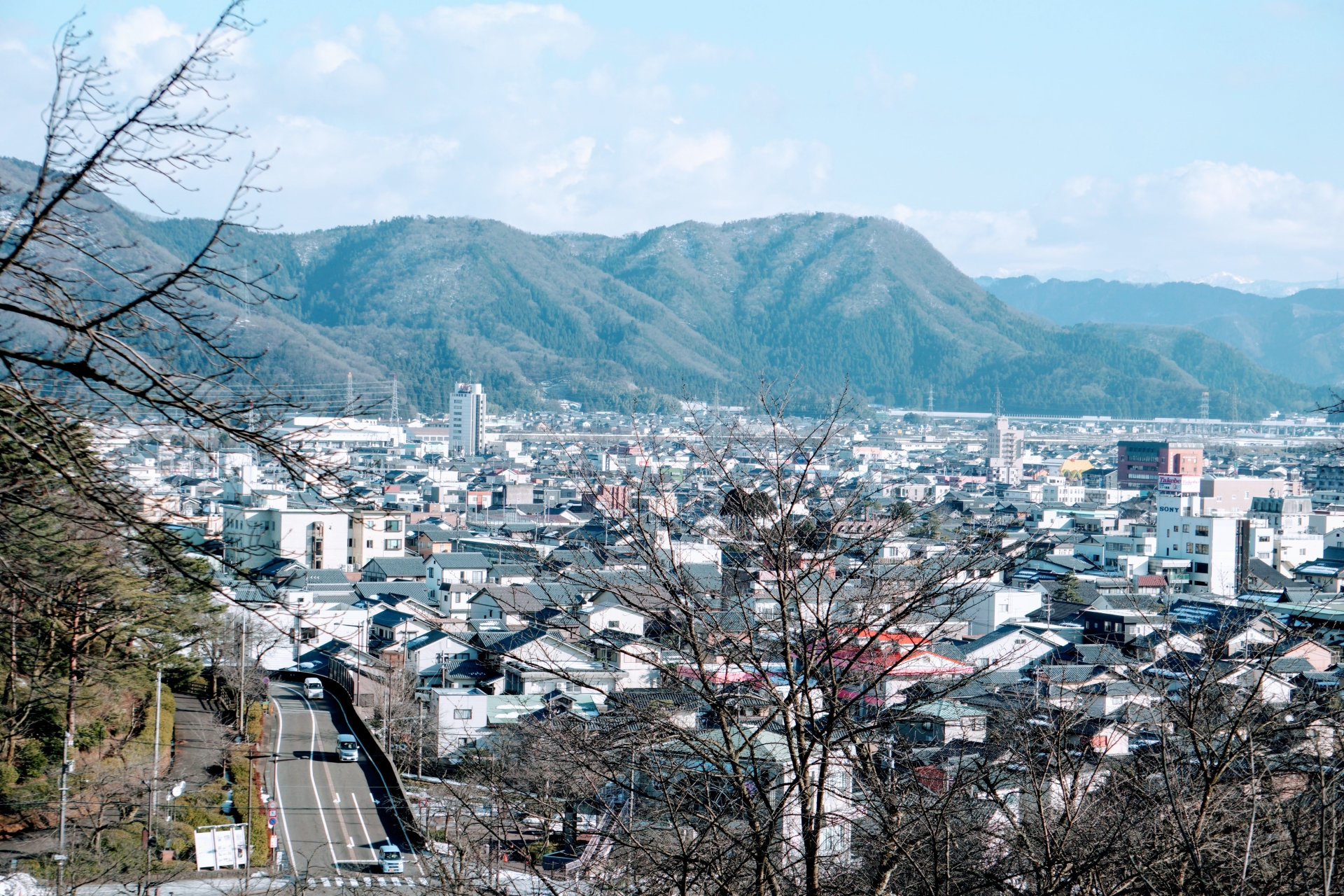
Sabae City is located in the central part of Fukui Prefecture, in Japan’s Chubu region. It is renowned as one of the country’s leading centers for eyeglass frame production, contributing significantly to Japan’s eyewear industry. In addition to its manufacturing heritage, Sabae is known for its commitment to innovation, craftsmanship, and civic technology. The city also features a blend of cultural attractions, traditional festivals, and a strong community spirit, making it a vibrant and forward-thinking local hub.
Megane Museum: Discover the Craftsmanship Behind Japan’s Finest Eyewear めがねミュージアム
Welcome to Sabae, the eyewear capital of Japan, where over 90% of the country’s domestically produced eyeglass frames are made. At the heart of this legacy lies the Megane Museum—a one-of-a-kind facility where visitors can explore the craftsmanship, culture, and innovation behind Japan’s world-renowned eyewear industry. This museum offers an in-depth look at the 100-year history of eyeglass making in Fukui, along with interactive exhibits showcasing the intricate manufacturing process passed down through generations of skilled artisans.
At the on-site eyewear shop, you’ll find over 3,000 frames, featuring the latest designs in high-quality Japanese eyewear. For a hands-on experience, the workshop studio lets you try your hand at making accessories or even creating your own custom eyeglass frame—a popular activity for families, creatives, and curious travelers alike.
Whether you wear glasses or not, the Megane Museum offers a fascinating journey into the artistry and innovation that define Japanese craftsmanship. It’s an inspiring and stylish stop that reflects the pride and precision of Fukui’s handmade heritage.
Nishiyama Park: A Four-Season Scenic Retreat in the Heart of Sabae 西山公園
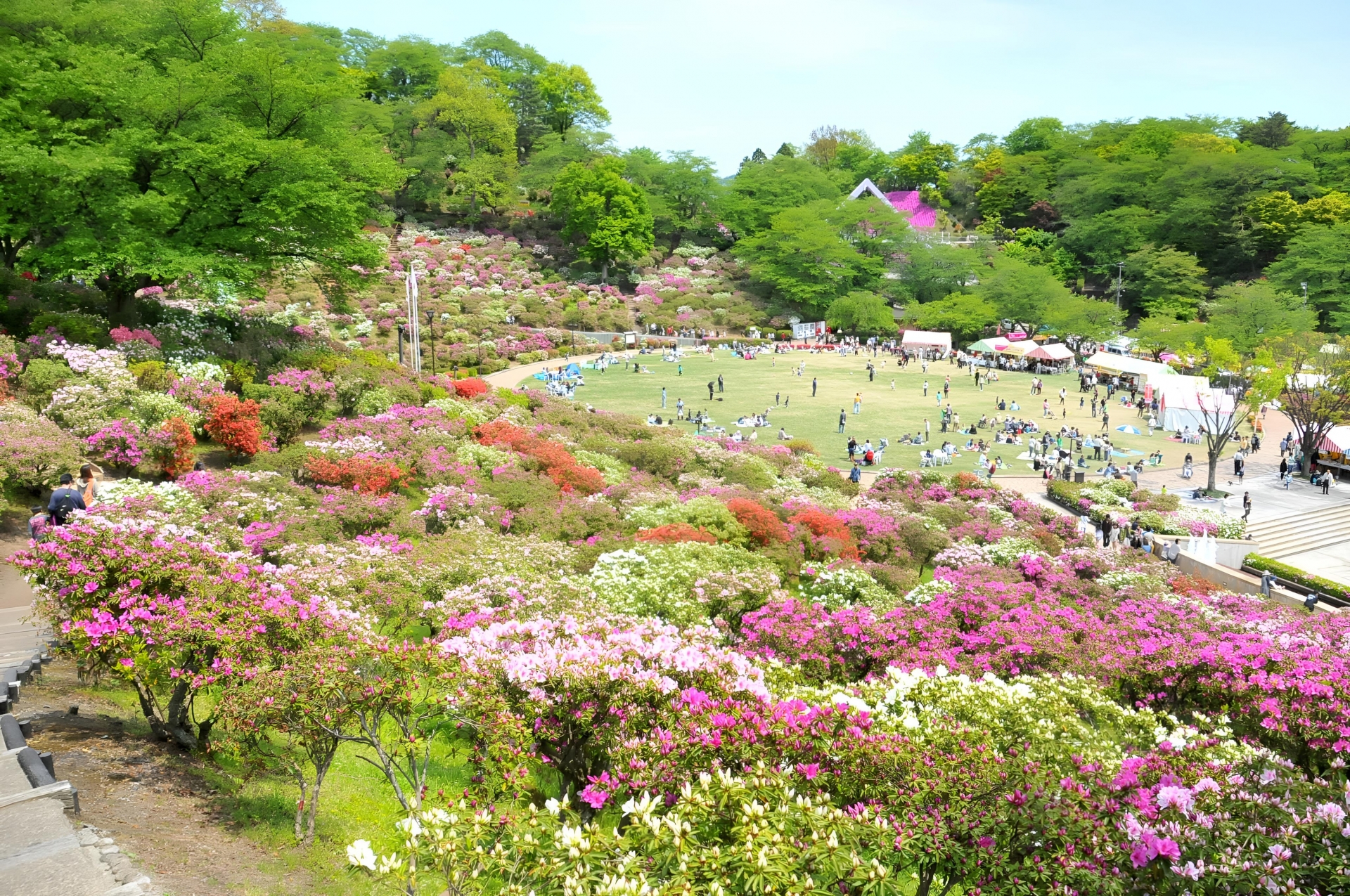
Recognized as one of the “Top 100 Historical Parks of Japan,” Nishiyama Park in Sabae is a lush and picturesque destination beloved for its seasonal beauty and family-friendly charm. The park is most famous for its spectacular azalea blossoms, with around 50,000 bushes blooming in vibrant pinks and purples each spring. Every early May, the park comes alive with the Tsutsuji Festival, drawing visitors from all over to admire the floral splendor.
Perched on a gentle hillside, the observation deck offers sweeping views over Sabae City, while the free-entry Nishiyama Zoo—home to adorable red pandas, a symbol of the city—is a hit with kids and animal lovers alike. The park also features a Japanese garden, large open lawns, and playgrounds, making it an ideal spot for picnics and leisurely strolls.
Beyond spring, Nishiyama Park offers beauty throughout the year: cherry blossoms in April, fiery maple foliage in autumn, and a snow-draped wonderland in winter, complete with traditional snow supports. With over 150 years of history, scenic landscapes, and a warm, welcoming atmosphere, Nishiyama Park is a delightful escape for travelers of all ages, in every season.
Urushi-no-Sato Kaikan: Discover the Timeless Art of Echizen Lacquerwareうるしの里会館

Located in the Kawada district of Sabae, the historic heart of Echizen lacquerware, the Urushi-no-Sato Kaikan invites visitors to immerse themselves in over 1,500 years of craftsmanship and tradition. Recognized as one of Japan’s official Traditional Craft Industries, Echizen lacquerware is famed for its elegant beauty, exceptional durability, and sophisticated techniques passed down through generations.
At the Urushi-no-Sato Kaikan, guests can explore the history, cultural significance, and production process of this storied craft through engaging exhibits and displays. The on-site shop offers over 1,000 lacquerware items, available at reasonable local prices—perfect for selecting unique, high-quality gifts or souvenirs. Adjacent to the main hall, visitors can also observe master artisans at work in the open workshop, showcasing delicate and time-honored techniques.
For a more hands-on experience, the center offers interactive workshops (reservations required) where guests can try their hand at lacquer painting, gold inlay (chinkin), and wipe-lacquering, deepening their appreciation for this exquisite art form. Whether you’re a lover of traditional design, fine crafts, or cultural heritage, the Urushi-no-Sato Kaikan offers a memorable and enriching encounter with one of Japan’s most refined artistic traditions.
Lapause Kawada: A Relaxing Retreat in the Heart of Nature ラポーゼかわだ
Nestled in the tranquil, forested hills of Sabae’s Kawada district, Lapause Kawada is a versatile resort complex where visitors can soak, dine, stay, and play amidst the beauty of rural Fukui. Surrounded by seasonal landscapes, this peaceful escape is ideal for those seeking relaxation with a touch of traditional charm. Guests can unwind in the open-air hot springs, savor locally inspired cuisine made from regional ingredients, and enjoy a variety of hands-on experiences such as soba noodle making and other cultural workshops.
Whether you’re planning a weekend getaway, family vacation, or group gathering, Lapause Kawada offers facilities for dining, overnight stays, banquets, barbecues, and even conferences. With its blend of hospitality, outdoor activities, and rejuvenating natural surroundings, the resort is a wonderful way to experience the authentic warmth and hospitality of the Kawada region throughout all four seasons.
Perfect for couples, families, and groups, Lapause Kawada is more than just a place to stay—it’s a place to connect with nature, culture, and community.
Tanaka Megane: Craft Your Style in Japan’s Eyewear Capital 田中眼鏡
Located along Route 417 in Shimmei-cho, Sabae, Tanaka Megane is a specialty eyewear shop that showcases the excellence of Sabae-made frames, which account for over 90% of Japan’s domestic eyeglass production. As part of the city’s proud legacy of fine craftsmanship, this boutique offers a carefully curated selection of high-quality, locally produced frames that blend precision, durability, and refined design.
What sets Tanaka Megane apart is its custom-order service, allowing customers to create one-of-a-kind eyewear from a variety of materials and styles. Whether you’re searching for a unique souvenir, premium everyday frames, or a personalized fashion statement, the shop’s expert staff will guide you through the process of crafting glasses that are perfectly tailored to you.
For travelers looking to take home something authentically Japanese, both functional and fashionable, Tanaka Megane offers a personal and memorable experience rooted in Sabae’s world-renowned eyewear tradition.
Shitsuyukan: Immerse Yourself in the Timeless Art of Echizen Lacquerware 越前塗りの漆遊館
Located along Urushi-no-Sato Street in Nakano-cho, Sabae, the Shitsuyukan is a dynamic shop and cultural experience center dedicated to the 1,500-year tradition of Echizen lacquerware. With over 1,000 lacquerware items on display and available for purchase—often at prices lower than retail—this facility is a treasure trove for those seeking beautiful, handcrafted pieces that blend elegance with functionality.
More than just a shop, Shitsuyukan invites visitors to experience the artistry firsthand. Guests can watch live demonstrations of lathe-turning, a key step in lacquerware production, and participate in hands-on makie (gold-powder inlay) workshops by reservation. These immersive activities provide a rare opportunity to connect with the traditional craftsmanship that defines this celebrated Japanese art form.
Whether you’re a collector, a design enthusiast, or a curious traveler, Shitsuyukan offers a memorable and interactive gateway into the refined world of Echizen lacquerware.
Echizen City, Fukui Prefecture 福井県越前市
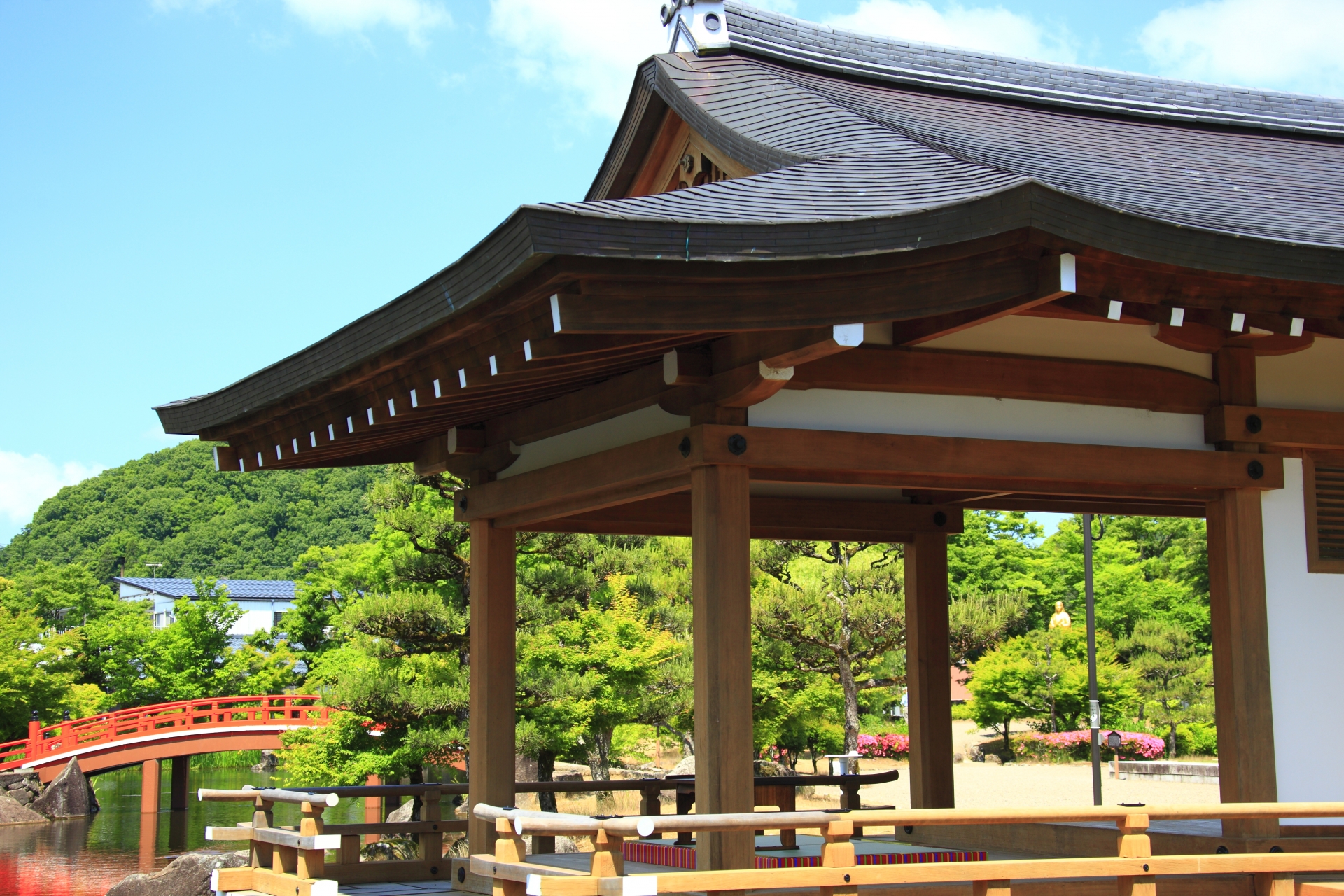
Echizen City is situated in the central region of Fukui Prefecture, Japan, and is well known for its rich history, traditional crafts, and natural beauty. The city is especially famous for Echizen washi (Japanese handmade paper), which has been produced for over 1,500 years, as well as for cutlery and lacquerware. Echizen also features scenic spots like the Kuzuryu River and historic temples, offering a blend of cultural heritage and serene landscapes. It serves as a center for craftsmanship and local industry, reflecting both tradition and innovation.
Echizen Washi no Sato: Journey into the Heart of Japan’s Papermaking Heritage 越前和紙の里
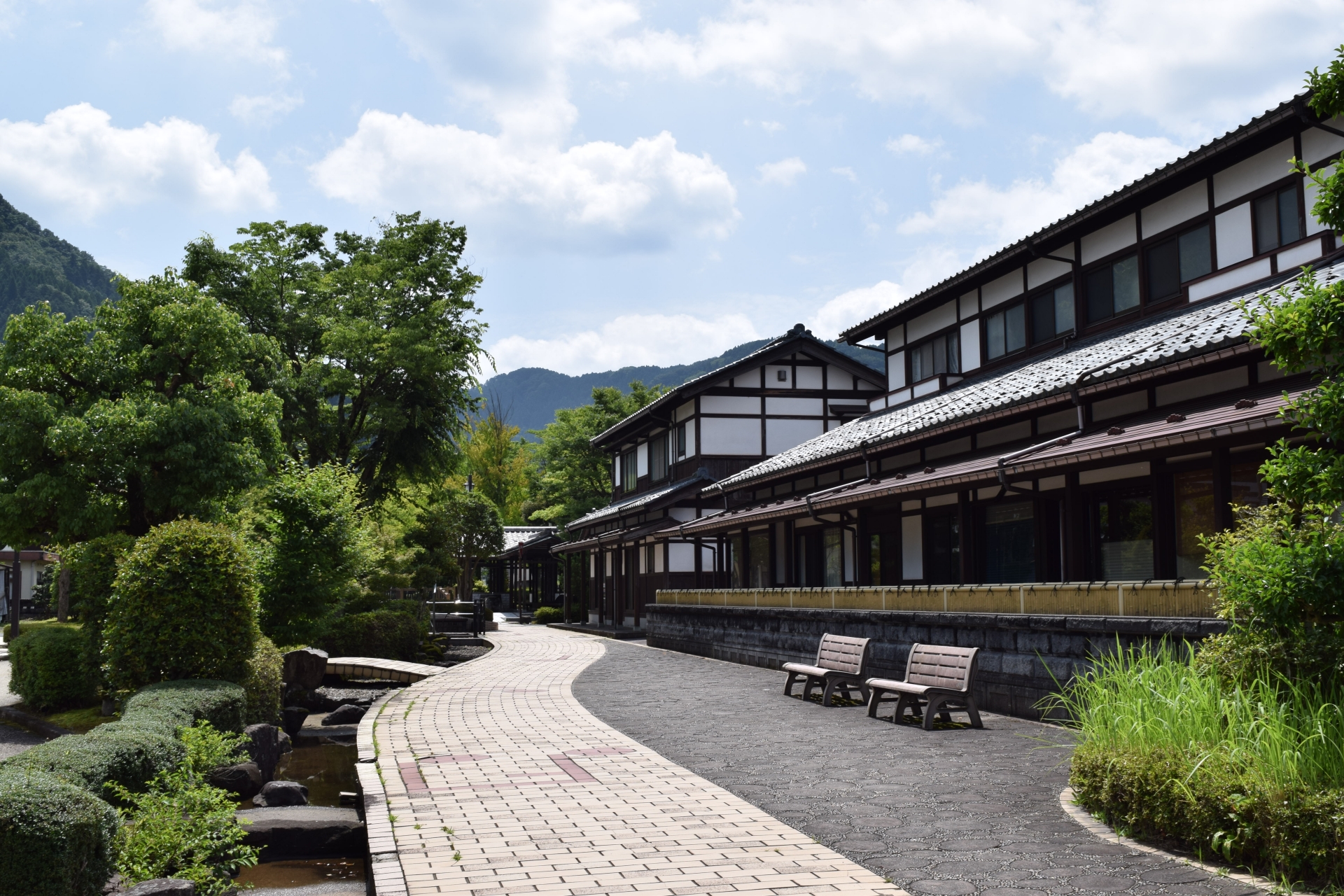
Tucked away in the scenic countryside of Echizen City, Echizen Washi no Sato is the living heart of Japan’s finest handmade washi (traditional Japanese paper). With a history spanning over 1,500 years, this region—especially the five artisanal villages of Oizu, Otaki, Iwamoto, Shinzaiike, and Sadatomo (collectively known as the Goka district)—has long been Japan’s top producer of high-grade, handcrafted washi.
Visitors can witness the intricate craftsmanship firsthand at Udatsu no Kogeikan, where skilled artisans demonstrate traditional papermaking techniques that have been passed down through generations. At the Papermaking Cultural Museum, explore the deep cultural roots and evolution of washi through fascinating exhibits and historical artifacts. For those looking to try it themselves, the Papyrus House offers hands-on papermaking experiences, allowing guests to create their own unique piece of washi art.
Surrounded by workshops, galleries, and charming paper studios, Echizen Washi no Sato is not just a destination—it’s a cultural encounter that celebrates the artistry, sustainability, and enduring elegance of Japanese paper craftsmanship.
Gotanjoji Temple: A Tranquil Haven Where Zen Meets Cats 御誕生寺

Tucked away in the peaceful mountain village of Shōda, Echizen City, Gotanjoji Temple is a Soto Zen monastery known not only for its spiritual discipline, but also for its affectionate nickname—“Neko-dera” (The Cat Temple). While this temple is primarily a training ground for Zen monks, it has also become a beloved sanctuary for around 30 rescued cats, offering them a peaceful home amid serene surroundings.
Visitors are warmly welcomed by the temple’s feline residents, who freely roam the grounds and often curl up beside statues or nap in sunlit corners. Highlights include the “Maneki Neko” fortune omikuji, cat-themed goshuin (temple stamps), and even a rare and whimsical “Cat Buddha” statue—a must-see for cat lovers and photographers alike. The temple’s feeding times (around 8:00 a.m. and 3:30 p.m., or 7:30 a.m. in summer) offer delightful opportunities to see the cats gather and interact.
In addition to its feline charm, Gotanjoji hosts free Sunday zazen meditation sessions and other events such as yoga and sign language classes, fostering a welcoming atmosphere for reflection, healing, and connection.
Whether you’re seeking spiritual calm or simply a moment of joy with some furry friends, Gotanjoji Temple is a uniquely soothing destination for both the heart and soul.
Okamoto & Otaki Shrines: Sacred Guardians of Japan’s Papermaking Tradition 岡太神社・大瀧神社
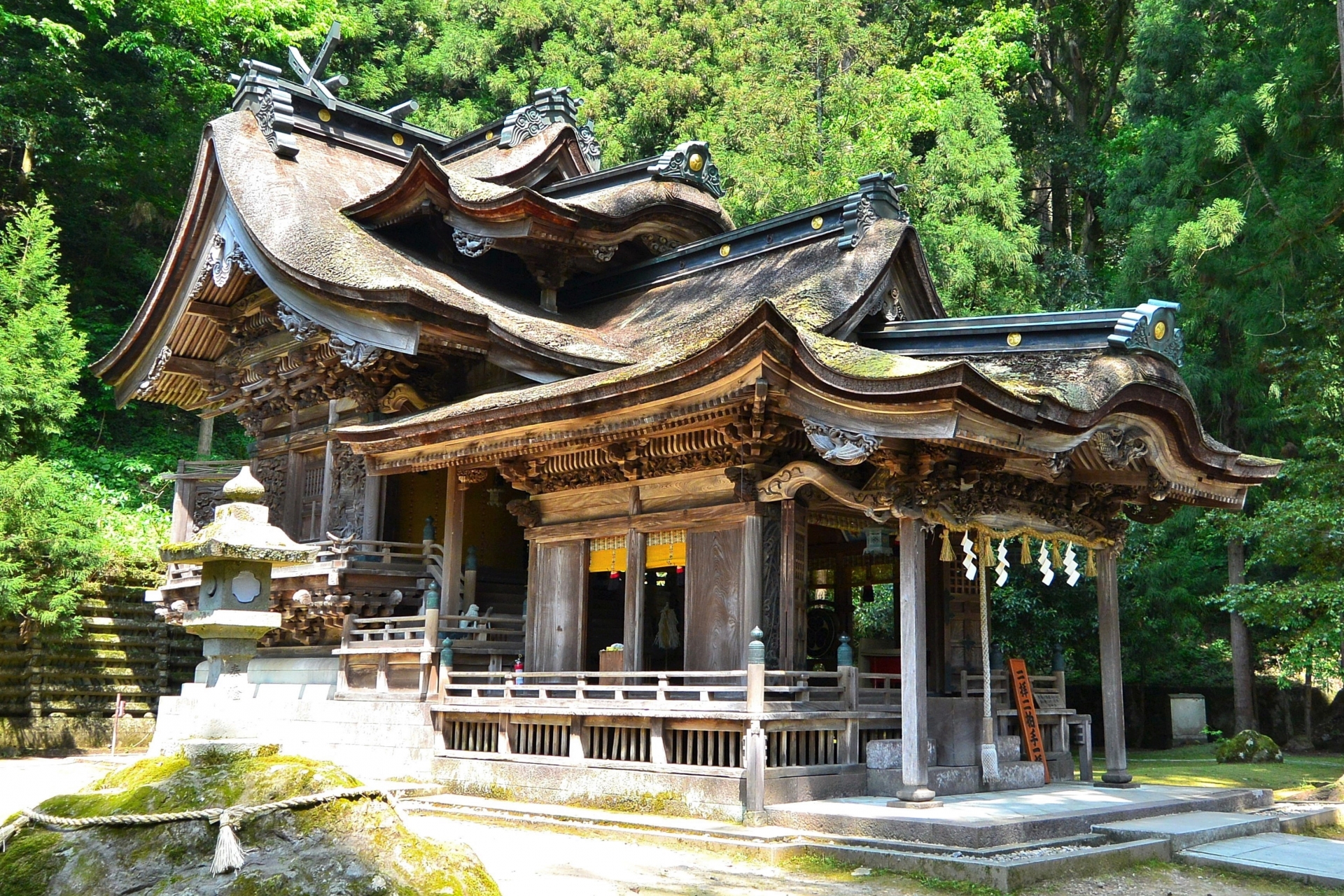
Nestled in the serene Echizen countryside, Okamoto Shrine and Otaki Shrine form a spiritually significant complex dedicated to Kawakami Gozen, the revered goddess of paper. These shrines are unique in all of Japan for enshrining the “paper ancestor deity”, making them a sacred pilgrimage site for artisans and devotees of Echizen washi, Japan’s finest traditional handmade paper.
According to legend, over 1,500 years ago, during the time of Emperor Keitai (then known as Prince Odo), a mysterious and beautiful maiden appeared at the upper reaches of the Okatagawa River. She taught the villagers to make paper using the region’s pure water—a gift that gave birth to Echizen’s washi heritage. In gratitude, the people deified her as Kawakami Gozen and built Okamoto Shrine to honor her.
The shrine’s main hall, constructed in 1843, is designated a National Important Cultural Property and is famed for having “the most complex roof design in Japan.” The ornate, multi-layered architecture is a masterpiece in itself, symbolizing the craftsmanship and aesthetic spirit that define the region’s papermaking culture.
Whether you’re a lover of history, traditional crafts, or sacred sites, Okamoto and Otaki Shrines offer a deeply meaningful glimpse into the spiritual origins of Japan’s paper legacy—an encounter with divine creativity nestled in the quiet hills of Echizen.
Ajimano-en Garden: A Timeless Landscape of Poetry and Romance 味真野苑
Set in the tranquil countryside of Echizen City, Ajimano-en Garden is a beautifully landscaped park steeped in the elegance of Japan’s oldest poetry anthology, the Manyoshu. This historical site is closely linked to Emperor Keitai, who is said to have lived here before ascending the throne. The garden is also renowned as the setting of a poignant love story between Nakatomi no Yakamori, an exiled nobleman, and Sano no Otogami no Otome, a court lady who remained in the capital. Their passionate poetic exchange, preserved in over 63 poems within the Manyoshu, immortalizes their bond and fills the garden with a sense of longing and literary romance.
Throughout the 4.7-hectare grounds, visitors can discover stone monuments inscribed with poems, known as soumonka (mutual love poems), and enjoy a peaceful walk among seasonal flowers and plants featured in the Manyoshu itself. From cherry blossoms in spring to colorful autumn foliage, the garden offers a poetic escape into nature and classical culture, making it a perfect destination for those seeking beauty, history, and a touch of heartfelt emotion.
Whether you’re a literature enthusiast, a lover of Japanese gardens, or simply in search of a quiet, contemplative place, Ajimano-en Garden is a deeply moving experience where poetry blooms with every season.
Takefu Knife Village: Experience the Legacy of 700 Years of Bladesmithing タケフナイフビレッジ
Step into the fiery heart of Japanese craftsmanship at Takefu Knife Village, a one-of-a-kind cooperative workshop in Echizen City, home to the 700-year-old tradition of Echizen Uchihamono (forged blades)—a nationally designated Traditional Craft of Japan. This state-of-the-art facility, completely renewed in August 2020, offers visitors the chance to see, experience, and purchase some of Japan’s finest handcrafted blades.
The village brings together 13 local knife-making companies under one roof, where guests can observe real-time forging, sharpening, and finishing processes by skilled blacksmiths and artisans—all free of charge. Informative displays explain the rich history and evolution of Echizen cutlery, while the on-site shop sells everything from chef’s knives and sickles to artisan blades at local prices.
For a truly hands-on adventure, visitors can join the popular knife-making workshops, where master craftsmen guide you step by step—from hammering red-hot steel to sharpening with rotating whetstones—to create your very own custom kitchen knife. These unique, reservation-only experiences are a rare opportunity to connect deeply with Japan’s world-renowned metalwork tradition.
Ending
Whether you’re marveling at a centuries-old torii gate, savoring fresh seafood at a lively market, or basking on the sands of a secluded island, Tsuruga City offers unforgettable experiences rooted in tradition, nature, and local charm. Its compact size, welcoming atmosphere, and well-preserved heritage make it an ideal destination for a day trip or a leisurely weekend escape. For those looking to journey off the beaten path and uncover the heart of Japan’s lesser-known coastal treasures, Tsuruga is a destination not to be missed.
